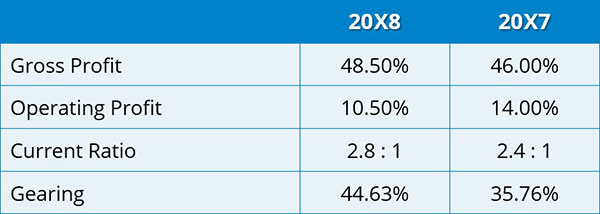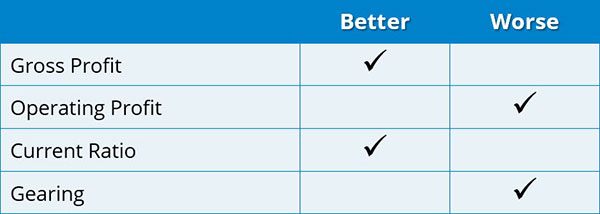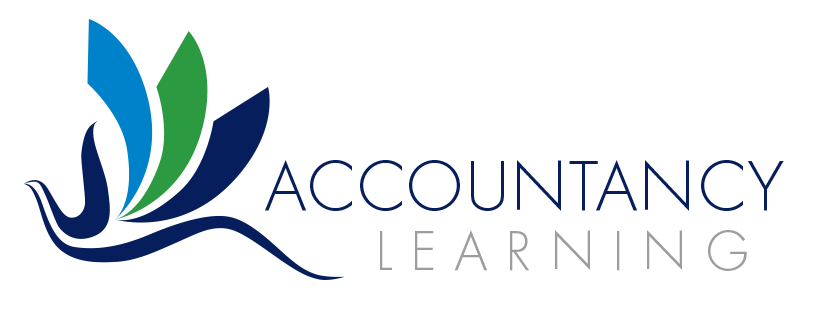Stuck with the written Ratio Analysis questions in AAT Level 4 (Professional Level)? Here we take you through a worked example…
Shown below is the kind of written ratio analysis question you can expect to see in the AAT Level 4 (Professional Level) Financial Statements exam along with the kind of comments you should include in your answer.
Here is the question:
Megan Meerkle, a potential investor, is considering buying shares in Windsor Ltd. She has asked for your assistance to help her determine whether or not she should buy the shares. You have calculated the following ratios in respect of Windsor Ltd’s financial statements for the last two years to assist you in your analysis.

Prepare notes for Megan that:
(a) Comment on whether EACH of the ratios is better or worse in 20X8 as compared to 20X7 and what this may tell you about the company.
(b) Provide advice, with reasons, as to whether or not she should buy shares in the company, based solely on your analysis of the ratios in (a) above.
In dealing with part (a) of the question, possible comments might include the following:
GROSS PROFIT PERCENTAGE
This ratio measures the amount of gross profit generated from sales. The ratio in 20X8 is 48.50% which is better, that is shows an improvement, compared to 20X7. Please do not make the mistake of saying that the ratio has improved by 2.50%. It hasn’t. Remember that the percentage improvement between the two years is calculated as 2.50 ÷ 46.00 x100, which gives a much greater improvement of 5.43%. You don’t need to spend time calculating the percentage improvement, just make sure you don’t use the wrong term to describe the movement in the ratio.
A safe comment would rather be that the ratio has improved from X to Y. Only two factors can cause the gross profit percentage ratio to improve. Either the selling price per unit has increased, or the cost of sales per unit has decreased, or a combination of the two. A change in the product mix could create this effect. We have no information in this question two tell us which reason applies.
OPERATING PROFIT PERCENTAGE
This ratio measures the amount of operating profit generated from sales. It takes into account the running costs of the business. In this case, we can see that the ratio has deteriorated (got worse) from 14.00% to 10.50%. This suggests that the business is managing its costs less well in 20X8, compared with in 20X7. In fact, the deterioration is even worse than it first appears. Remember that operating profit is calculated as gross profit minus running costs. Therefore, we would expect the change in operating profit percentage to be roughly the same as the gross profit percentage. Here, the gross profit percentage has improved, while the operating profit percentage has deteriorated. This suggests poor management of costs in the current year. (It could be that there were high “one-off” costs for a special event, such as a wedding!?!)
CURRENT RATIO
This ratio measures the ability of the company to pay its immediate debts. You will frequently find references to a ‘safe’ current ratio of 2:1. Windsor Ltd has a current ratio for 20X8 of 2.8:1 which is ‘better’ than the ratio of 2.4: 1 for 20X7. We have no information about the type of business operated by Windsor Ltd. A cash business, such as a retailer, can operate on a very low current ratio, as it has few trade receivables and cash coming into the business all the time. Therefore, the idea of the safe ratio must be treated cautiously.
You must also bear in mind that a current ratio which is too high, while clearly providing sufficient resources to meet immediate debts, may suggest that a business has too much working capital tied up in current assets and is not as efficient as it should be. In the case of Windsor Ltd the ratio appears to be moving towards a level where we could say that working capital is not being managed efficiently. Although this would not be an immediate problem for the business, it could be an indicator of potential liquidity problems for the future.
GEARING
This ratio measures the proportion of the company’s total finance that is funded by debt. The gearing ratio has deteriorated (got worse) in 20X8 and the gearing percentage is now 44.63%. This makes the company relatively highly geared, as a gearing ratio of 50% and above indicates high gearing. The significance of the gearing percentage is that the higher the gearing, the higher the risk within the company. This is because high gearing means more loans with interest payments that will have to be paid regardless of profit level. Windsor Ltd appears to have been borrowing money during the year and now has relatively high gearing. It may find difficulty in raising additional finance if needed in future as it is more risky.
This situation might also indicate that the company has taken out a long term loan which it has used to pay for the increased running costs (as indicated by the poor operating profit percentage). The improved current ratio indicates that there is still some of this cash available – but this might be used up next year if operating costs are not controlled. Will the company be able to meet the future loan repayments?
We now move on to part (b) part of the question:
You are required to provide advice, with reasons. It is important not to sit on the fence in this part of your answer you must clearly indicate whether Megan should or should not invest in the company and you must give your reasons for doing so.
Note also the final part of the question which says that your answer must be based solely on your analysis of the ratios. It is not unknown for students to write, for example, a series of paragraphs explaining how the company position has deteriorated, and then recommend that the investor buys shares. This is clearly incorrect. So let’s look at the situation we have got here.

The gross profit percentage has improved which is good for an investor as it indicates better profitability. However, there was a marked deterioration in the operating profit percentage which suggests poor management of costs. The current ratio provides a safer ratio in terms of paying for immediate debts, but may also indicate some inefficiency in the management of working capital. Taken together, the operating profit percentage and the current ratio suggest that management of the company is less effective in the current year than it has been previously, which is a cause for concern. The gearing ratio has shown a substantial increase during the year, indicating greater use of loan finance and a much riskier company.
Taking all of these factors into account, the increased risk and possible indication of poor management suggest that it would not be a good idea for Megan to invest in Windsor Ltd at present.






